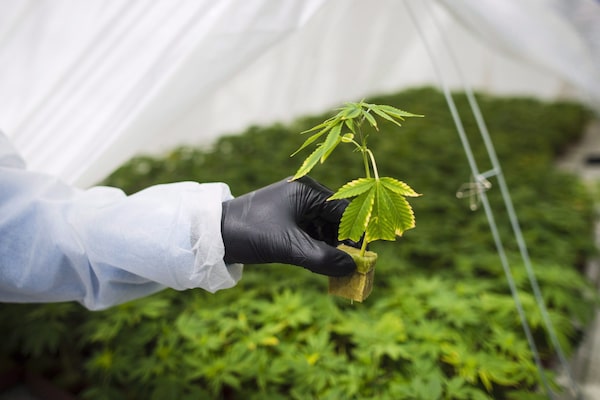Opinion: Will Canada lead or lag as the international market opens up for medical cannabis
October 12, 2025

Rick Savone is senior vice president, global government relations, of Aurora Cannabis.
As a former trade commissioner, ambassador to Brazil, and consul general in China, I spent three decades helping Canadian businesses compete globally. From my vantage point within Canada’s cannabis industry, I see rich opportunities for our country – if we can navigate the pitfalls.
Canada wasthe first G20 country to legalize and regulate cannabis, building on a medical regulatory system dating back to 2001. That pioneering step gaveit a head start andpositioned Canadian producers to lead internationally as global demand for medical cannabis accelerates.
In the years between legalization in 2018 and 2024, cannabis has contributed about $76.5-billion to Canada’s gross domestic product (GDP), according to a recent report from the Ontario Cannabis Store and Deloitte. It also showed that the industry supports more than98,000 jobs.
But thatinitial lead in the industry is slipping. Outdated barriers are preventing Canadian producers from seizing the full opportunity of medical cannabis exports. Canada needs a national cannabis export strategy to secure a global advantage in a regulated industry the federal government itself helped create.
Cannabis stocks surge after Trump endorses cannabidiol for senior healthcare
Three structural problems are holding us back.
Canada lacks domestic Good Manufacturing Practices certification for cannabis, considered the global standard for quality compliance, relying instead on Good Production Practices. Being GMP-certified, however, is necessary for cannabis exports to international markets such as Europe. Canadian exporters must secure GMP approval from every importing country – a costly, duplicative process that hands control of quality standards to foreign regulators.
Canada is not leveraging its leadership role internationally. We were among the first to integrate medical cannabis into a regulated framework, yet we aren’t using that experience to help shape how other countries introduce medical cannabis into their health care systems.
And the export permit process takes too long even as demand surges, creating friction for licensed producers with a track record of medical cannabis exports.
This is our industry’s “Avro Arrow moment.” Without action, we risk losing our first-mover advantage just as the global market takes off. That’s why it’s time to call for a national cannabis export strategy.

Health Canada should adopt domestic GMP certification and potency testing standards for medical cannabis, enabling mutual recognition agreements with importing markets and allowing Canada to define, not follow, global quality benchmarks.
The federal government should modernize cannabis export permitting at Health Canada bycreatingstructured support to facilitate transactions by known medical cannabis exporters to established foreign importers. Service standards need to be competitive to keep pace with rising demand.
Finally, cannabis must be integrated into Canada’s broader economic diplomacy. Industry representatives should join trade missions, and cannabis should be part of global trade advocacy, underscoring our regulatory expertise as a lever for market access.
These steps would not only secure market access but also strengthen public health protections and patient outcomes worldwide. Strong export standards elevate quality across the industry and reinforce Canada’s reputation for responsible regulation.
As legal cannabis flourishes in Morocco, country’s black market still dominates
The global medical cannabis market is projected to exceed US$9.5-billion by 2027, according to cannabis market research firm BDSA. Industry sees that as a conservative estimate, with growth expected to accelerate if the U.S. reschedules cannabis at the federal level to acknowledge its medical value. Canada has a short window to expand into non-U.S. markets before American firms begin to compete globally. Across Europe, Australia, Israel and Latin America, governments are increasingly recognizing the medical potential of cannabis. This is not just a consumer trend but a public health opportunity, helping patients manage conditions from chronic pain to epilepsy and reduce opioid misuse.
Canadian medical cannabis already reaches markets such as Germany, Poland, the United Kingdom, Australia and New Zealand, with emerging opportunities in Spain, France, Czechia, Turkey, Ukraine and Slovenia. Last year, Canada exported about $403-million in medical cannabis products, representing 7.3 per cent of national production. This figure is on track to surpass $500-million this year. Canada’s longstanding regulatory framework for medical cannabis and research partnerships give the products credibility that few competitors can match.
But global rivals are scaling rapidly with more flexible regulatory regimes, and U.S. producers are acquiring Canadian companies as staging grounds for exports. If we stand still, others will capture the markets Canadian producers opened.
Canada has rallied around aerospace, critical minerals and agri-food. Cannabis deserves the same focus. Acting now is not just smart policy; it’s sound economic strategy when we need it more than ever as the country works to increase exports to global markets.
The world is not waiting for Canada to take the pole position in medical cannabis. Global competitors are moving forward – with or without us.
Search
RECENT PRESS RELEASES
Related Post




